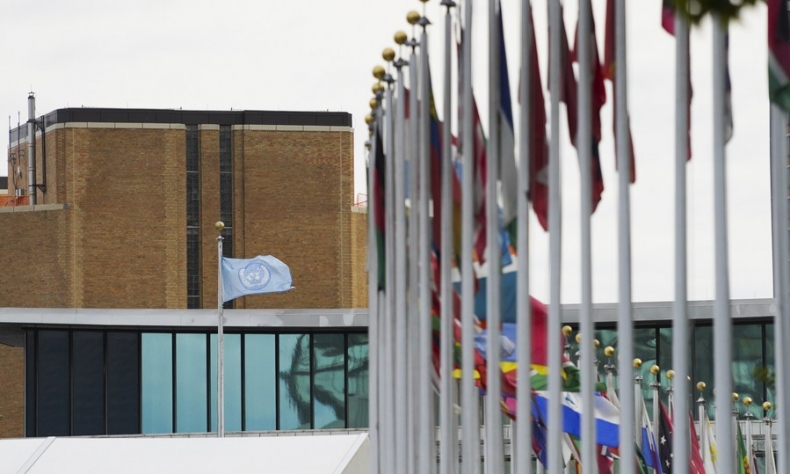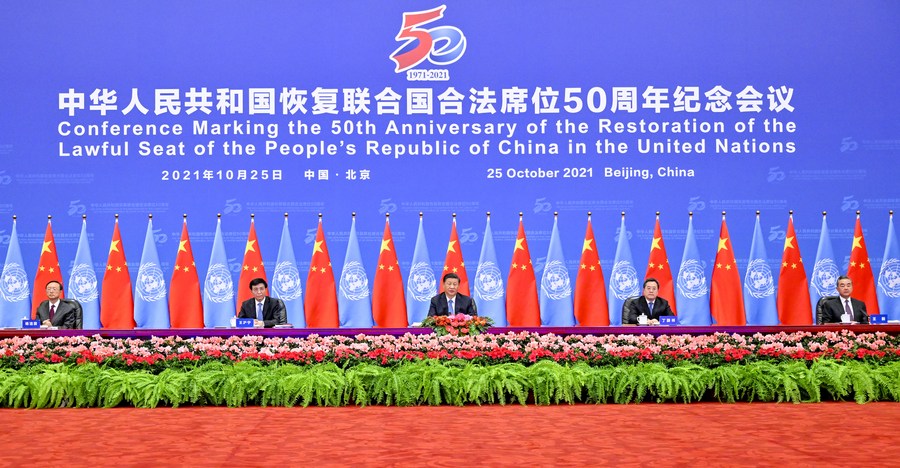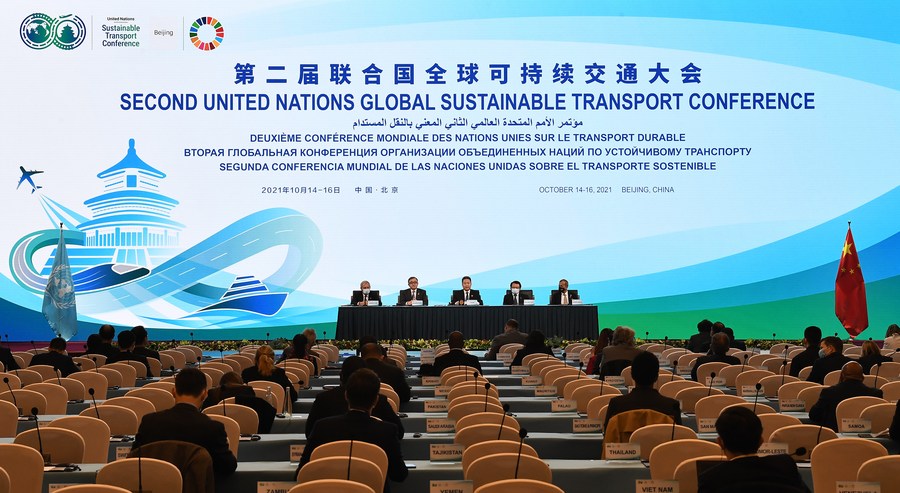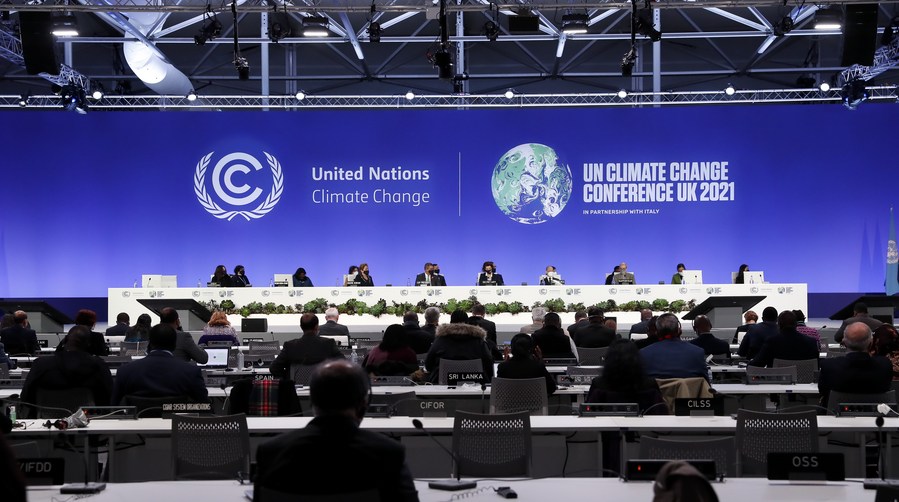China and the UN at 50

China and the UN will reimagine, innovate, reinvigorate and continue the hard and daily work and dedicate ourselves anew to creating lasting prosperity for the people of China and the world over.
China was one of the architects of the UN. The country was the first signatory of the UN Charter in San Francisco in 1945.
Yet it was only in October 1971, with the Chinese delegation led by then Vice Foreign Minister Qiao Guanhua, that the People’s Republic of China’s representation in the UN was resumed. Since that time, the UN has had the great privilege of witnessing and supporting China in achieving one of the greatest periods of socioeconomic progress in world history.
Now, on the 50th anniversary of China’s return to the UN, as we commemorate a half-century of cooperation, the question naturally emerges: Which way now for the UN and China?
China and the world are at a critical juncture. Tentatively emerging from the COVID-19 pandemic, but with many still struggling. Staring down the threats of climate change, with record-setting heatwaves, fires, storms, and other natural disasters occurring worldwide. Counting down the years in this Decade of Action to achieve the Sustainable Development Goals (SDGs), a collection of 17 interlinked global goals designed by the UN to be a “blueprint to achieve a better and more sustainable future for all.”
China’s standard-setting leadership in the past decades gives the world confidence that we can achieve even greater things in the years to come.

Record-breaking
In 1978, Deng Xiaoping’s reform and opening-up policy began to transform the nation’s landscape, as evidenced, for example, in Shenzhen, which changed from a fishing village on the Pearl River Delta into an international hub for research and innovation—in a single generation.
The following year, China chose to accept development assistance from the UN, learning from its long experience in poverty alleviation and industrial and agricultural growth.
China’s success in the more than four decades since has been nothing short of miraculous. During this time, China:
Lifted over 770 million people out of absolute poverty;
Invested in public health and education, investing in human capital thus making possible a happier and healthier workforce that contributed to economic productivity;
Became the world’s manufacturing center, based on a growth model of foreign investment, resource-intensive manufacturing, cheap labor and exports;
Multiplied its per-capita GDP from $180 in 1979, to an incredible $12,000 today.

The signs of this progress are evident, not just in statistics, but in daily quality-of-life matters. Throughout China now lie the classic hallmarks of a market economy, with opulent shops from luxury brands, foreign and domestic.
For example, in early 1980s Beijing, cabbage was often the only vegetable on the menu. With help from the UN’s development agency in China, availability at markets expanded—supporting the diversification of domestic vegetables and introducing new ones from abroad, such as broccoli.
This startling success story remains on track. China’s per-capita GDP is projected to more than double by 2025, reaching over $25,000, adjusted for purchasing power. The country’s surging economy is set to overtake 56 countries in the world’s per-capita income rankings during the quarter century through 2025, the International Monetary Fund estimates.
No less an authority than Professor Jeffrey Sachs, a UN SDG advocate and Director of the Center for Sustainable Development at Columbia University, has called China an “inspiration” in stopping the pandemic and ending extreme poverty.
The country’s progress becomes all the more remarkable considering the hit that the pandemic has delivered to the global economy. China’s generosity and leadership on this front have been commendable.
Chinese Foreign Minister Wang Yi told the Ninth World Peace Forum in Beijing to build a “Great Wall of Immunity” to battle the COVID-19 pandemic.
Nevertheless, as with any economy at this stage of development, the relentless pursuit of high growth is reaching its natural limits, and China faces new economic, social, and environmental challenges.

New priorities
The SDGs are meant to be achieved by 2030. I see three areas for close cooperation at this critical juncture.
First, a new sustainable development model. The government recognizes slower economic growth as the “new normal.” Changing demographic, labor, and investment realities present China with new obstacles in addressing food security, pervasive inequalities and cost-effectiveness in universal healthcare.
In a post-xiaokang society, a society of moderate prosperity, China needs to embrace innovations and services that drive equitable and all-inclusive progress, dealing with the legacies of rapid expansion to achieve the SDGs and leave no one behind.
Second, climate change. As a consequence of its large population and economy, China is the world’s largest emitter of carbon dioxide, responsible for a quarter of global emissions. Having recognized the environmental costs of this development model, President Xi Jinping has set the bold ambition for China to peak carbon emissions before 2030 and reach carbon neutrality before 2060.
Here, China’s recent pledge to end all financing of coal plants abroad and redirect its support for developing countries toward green and low carbon energy is most welcome.
We will need to sustain this momentum in keeping with the COP15 UN Biodiversity Conference in Kunming, the second UN Sustainable Transport Conference in Beijing, and the COP26 UN Climate Change Conference in Glasgow.

Third, multilateralism. China is a champion for multilateral efforts addressing global challenges. It has the will, knowledge and resources to contribute enormously to the SDGs and position itself as an exceptional member of the community of nations.
As UN Secretary General António Guterres has described, “In its successful efforts in the fight against extreme poverty, China’s accomplishments in the past decades set a powerful example that can be shared with other countries through South-South Cooperation.”
Today, China is the second largest contributor to the UN peacekeeping budget and has dispatched more peacekeepers to join in UN missions than any other permanent member of the Security Council. China also played a vital role in shaping the consensus needed for the SDGs and the Paris Agreement.
Future efforts should emphasize initiatives that expand vaccine access, grant debt relief to lower-income countries, and provide sustainable financing for infrastructure and climate efforts.
On this front, we hope the Global Development Initiative recently announced by President Xi recently will accelerate the required international cooperation efforts and we extend our support to contribute our expertise, in line with international norms and standards.
In this Decade of Action, to achieve the SDGs, the UN can support this ambition and convene, connect and catalyze stakeholders in leveraging China’s development experience to benefit other countries, especially those in Africa, in the spirit of South-South Cooperation.
October 2021 was a time for the UN and China to celebrate our 50-year relationship. China and the UN will reimagine, innovate, reinvigorate and continue the hard and daily work and dedicate ourselves anew to creating lasting prosperity for the people of China and the world over.
The author is resident coordinator of the UN in China.
 Facebook
Facebook
 Twitter
Twitter
 Linkedin
Linkedin
 Google +
Google +










